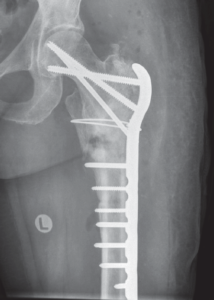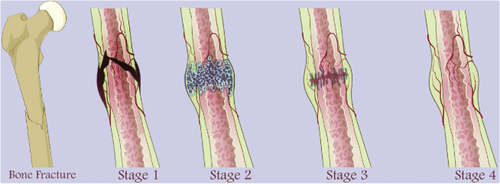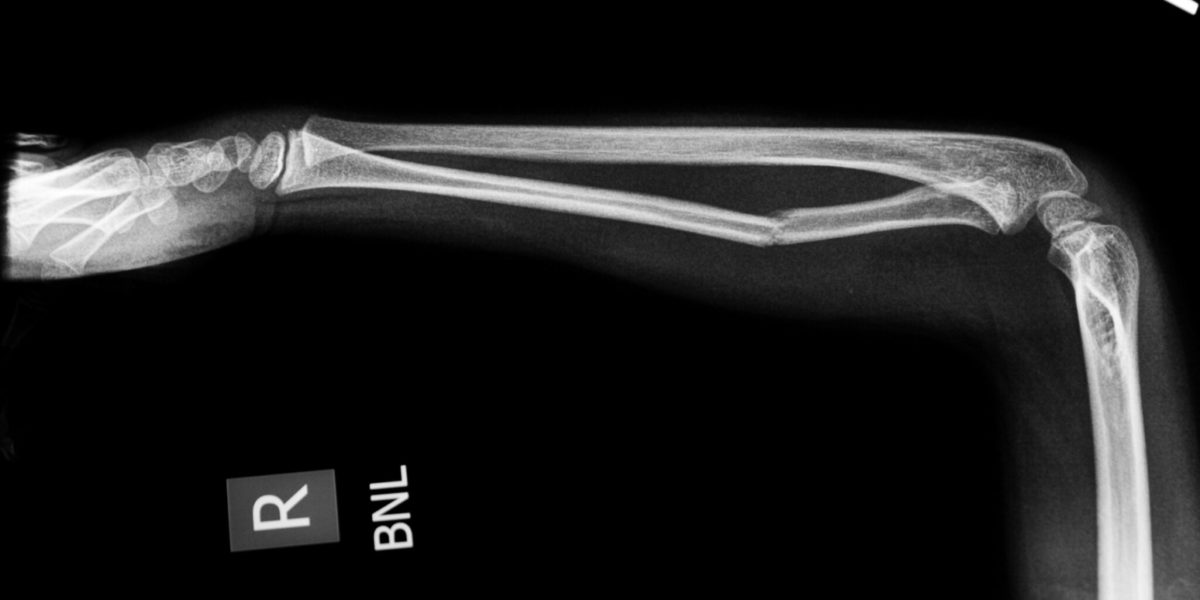Have you observed that someone around you has broken their arms or legs? Bone fracture is a complete or incomplete break of bone continuity. And it is very common in our daily lives that there are more than 3 million cases in the U.S. per year. Many events may cause bone fractures, such as falls, car accidents or sports injuries. So, do you know how long it takes for the fracture to heal?

Bone fracture healing is a repair process that consists of multiple stages. There are two types of repair: primary and secondary bone healing. Primary healing only occurs with the application of rigid internal fixation, for example, a compression plate. The rigid fixation provides absolute stability, and primary healing includes attempting to reconstruct the continuity between fracture fragments.
In contrast, secondary healing occurs when the fixation is not rigid. For secondary healing, there are four stages: inflammatory response, soft callus formation, hard callus formation, and bone remodeling. After the bone fracture, torn vessels form hematoma, which is localized bleeding outside of blood vessels within the fracture site and provides a foundation for the following stages. The inflammation begins immediately and continues until the cartilage or bone begins to form. During the inflammatory phase, stem cells migrate to the fracture site, form the granulation tissue (new connective tissue and microscopic blood vessels), and release growth factors that stimulate bone formation. This phase usually lasts 3-4 days and may last up to one week.
In the second week after the bone fracture, soft callus (cartilage) begins to form. At this stage, cells within periosteum (the membrane covers the outer surface of the bone) and granulation tissue begin to proliferate and differentiate into chondrocytes until they bind with each other. Chondrocytes are the cells found in cartilage connective tissue and constitute the “bridging callus”. In addition, the amount of newly formed cartilage is related to stability, that less stability leads to more cartilage. The formation of soft callus will be completed within the first three weeks after the fracture, which means this phase needs approximately two weeks to complete.
The following stage is hard callus formation, also known as endochondral ossification. It is a replacement of cartilage with bone. Mineralization of cartilage develops from the ends to the center of the fracture site. The trabecular bone would be formed from osteoblasts (cells that synthesize bone tissue) on the newly exposed mineralized surface. Finally, all the cartilage turns into trabecular bone and forms the “hard callus”. At the end of this phase, the injured bone will be able to recover sufficient strength and rigidity for rehabilitation exercise.

The final stage of secondary bone healing is bone remodeling. This phase starts 3-4 weeks after the bone fracture. Bone remodeling is a slow process that may last 6-9 years, which is 70% of the total healing time. In the remodeling, osteoclasts (cells that break down bone tissue) resorb the trabecular bone, and osteoblasts deposit compact bone. It is a process of equilibrium between resorption and formation, that the trabecular bone is replaced by compact bone, in order to recreate the bone to appropriate shape and adapt to mechanical loads and strain.
In clinical treatment, bone fracture usually takes 6-8 weeks to heal. However, it does not mean the bone is totally cured. When the doctor says the treatment is finished and it is fine to let the body free from the fixation, the bone actually is at the beginning of the final stage since the bone remodeling may take several years.
For more details of the bone fracture healing, please check the following video:
For further reading, please click here and here.
Featured image cropped from a xray of a forearm which is licensed under CC BY 2.0.

